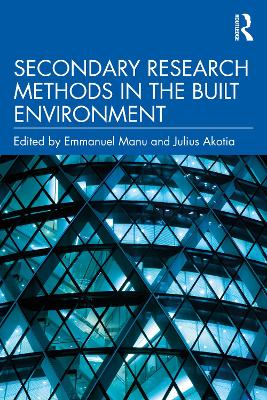The use of secondary data for research can offer benefits, particularly when limited resources are available for conducting research using primary methods. Researchers and students at both undergraduate and postgraduate levels, including their academic instructors, are increasingly recognising the immense opportunities in applying secondary research methods in built environment research. Advances in technology has also led to vast amounts of existing datasets that can be utilized for secondary research. This textbook provides a systematic guide on how to apply secondary research methods in the built environment, including their various underpinning methodologies. It provides guidance on the secondary research process, benefits, and drawbacks of applying secondary research methods, how to source for secondary data, ethical considerations, and the various secondary research methods that can be applied in built environment research. The book incorporates chapters dealing with qualitative secondary analysis, systematic literature reviews, legal analysis, bibliometric and scientometric analysis, literature-based discovery, and meta-analysis.
Secondary Research Methods in the Built Environment is an ideal research book for undergraduate and postgraduate students in construction management, construction project management, quantity surveying, construction law and dispute resolution, real estate and property management, building services engineering, architecture, and civil engineering.
- ISBN10 036742987X
- ISBN13 9780367429874
- Publish Date 11 March 2021 (first published 10 March 2021)
- Publish Status Active
- Publish Country GB
- Publisher Taylor & Francis Ltd
- Imprint Routledge
- Format Paperback
- Pages 250
- Language English
